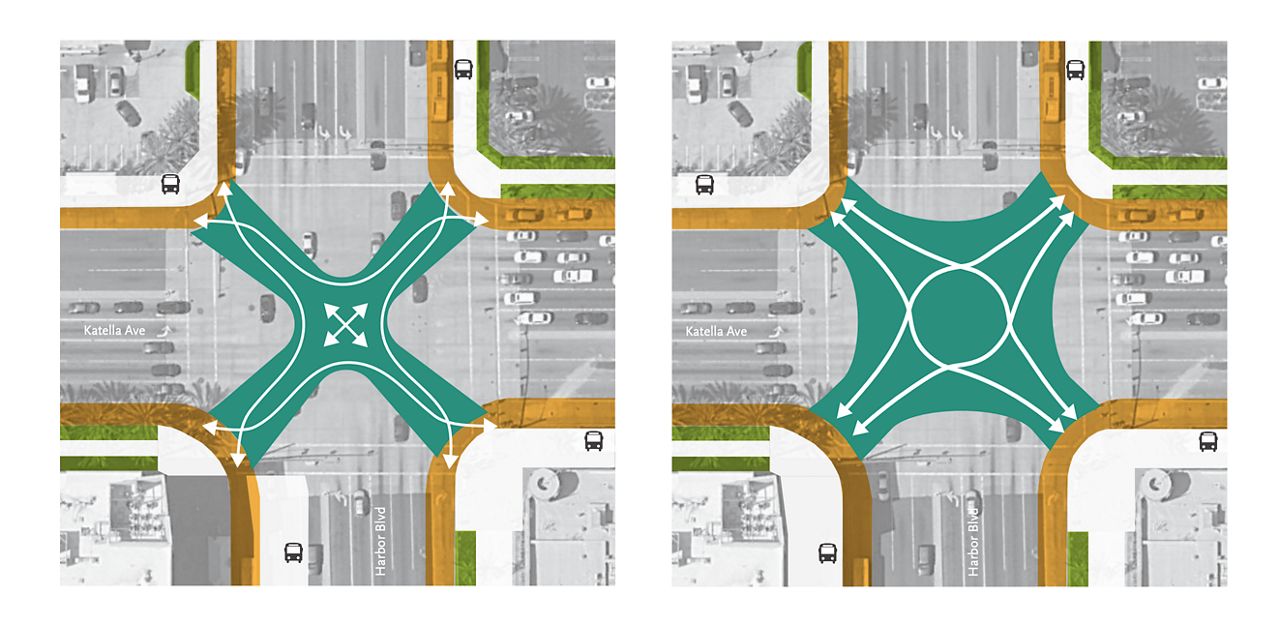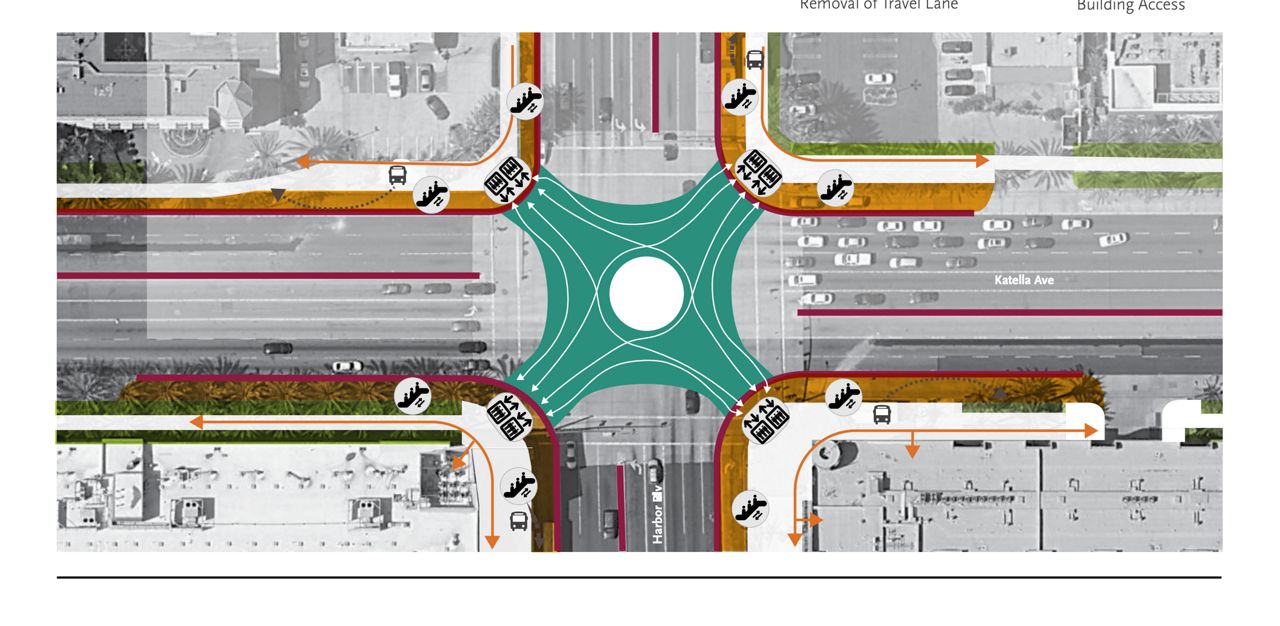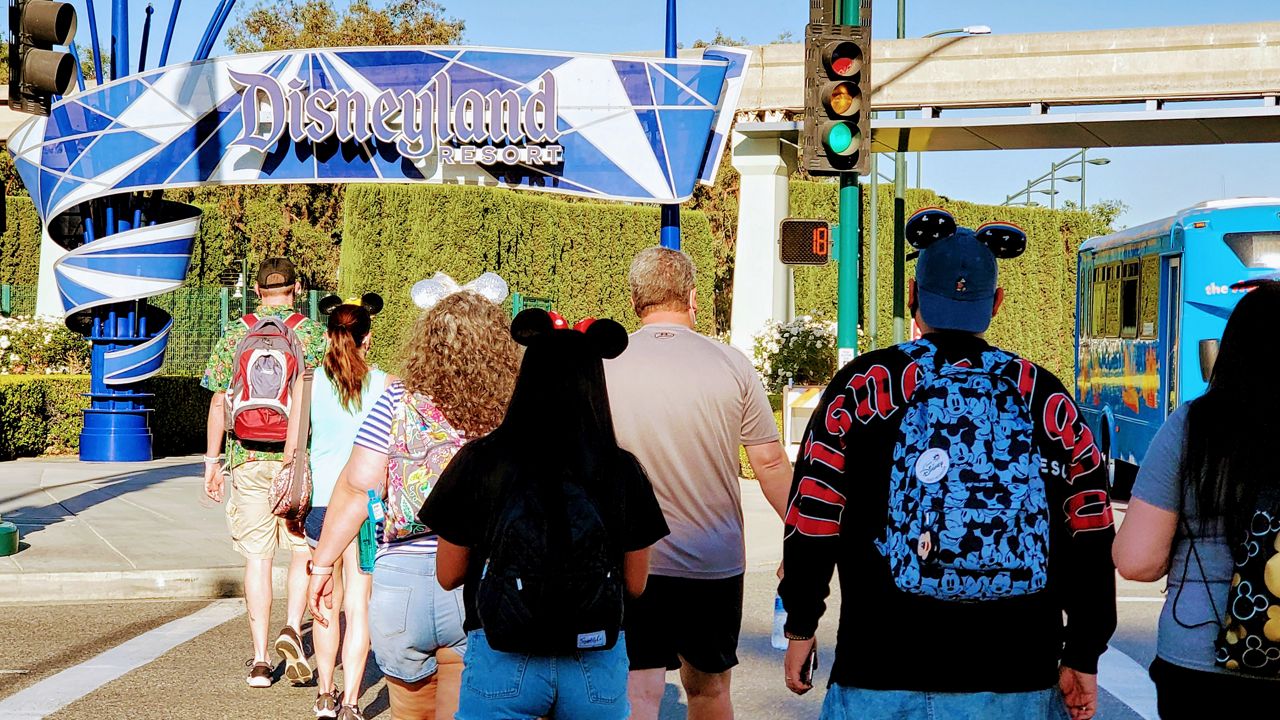ANAHEIM, Calif. — For visitors of Anaheim's Resort District and Disneyland in the future, imagine:
People walk on a pedestrian bridge above Disney Way and Harbor Boulevard that leads them straight into Disneyland Resort's doorstep.
People park their cars at the city's Anaheim Regional Transportation Intermodal Center and hop on an east-west mass transportation system that could take them directly to the Anaheim Convention Center.
Visitors climb aboard an aerial gondola system from ARTIC to Disneyland or the convention center.
Those are among several wishful transportation options Anaheim city officials are contemplating as they plan how people will navigate through the city's busy and growing resort district in the future.
The city hosts an online public community meeting at 5 p.m. on Jan. 13 to get the public's take on the Anaheim Resort Mobility Plan. The community meeting will be the last of its kind before city planners present their findings to the city council sometime in February.
"This study gives us a chance to look at near-term transportation means that have evolved in the past years," said Anaheim spokesman Mike Lyster to Spectrum News.
Lyster makes it clear. It's a "broad brush study" on transportation in the resort district. The council is not voting on any one or two options.
"This is an informative exercise that the council will hear about," Lyster said. "It's not going to get too specific on any mode of transportation. The study will provide flexibility as technology and transportation continue to evolve."

The meeting comes as businesses in the resort district continue to rebound from the economic impact of the coronavirus pandemic. With tourism shutdown and limited, fewer people visited Anaheim's hotels, theme parks and stadiums than in years past.
But people will return and visit once this pandemic is over.
Before the coronavirus pandemic, Anaheim attracted more than 25 million people a year — a combination of tourists visiting the Disneyland Resort, meetings and conventions at the Anaheim Convention Center and sports fans or concertgoers visiting the Honda Center or Angel Stadium.
And the resort district continues to grow.
Disneyland announced that it is laying the groundwork for the possibility of building a third theme park on top of its Toy Story Parking Lot on Harbor Boulevard and Katella Boulevard.
The Honda Center anchors OCV!BE, a $3 billion, 115-acre mixed-use community and live entertainment megaproject currently under development.
And suppose the city's Angel Stadium deal finally goes through to Los Angeles Angels owner Arte Moreno. In that case, that area will see future mixed-use live, work development and possibly a new baseball stadium.
The city has long flirted with implementing a dedicated mass transportation network that would shuttle millions of tourists in and around the city's primary anchors, Angel Stadium, Honda Center, the convention center and Disneyland.
But to no avail.
The city council, led by former Mayor Tom Tait, killed a controversial $300 million streetcar project linking ARTIC to the Disneyland Resort in 2017.
The resort district currently has a dedicated mass transportation network called the Anaheim Resort Transportation or ART, a series of buses that goes around the resort district and surrounding areas.
Lyster said the city last completed a transportation study like this in the mid-2000s.
But transportation and mobility have changed since then, he said.
The popularity of rideshare, scooters, pickup and delivery orders and micro-mobility has changed how people move in the resort and society.
The new $1.03 million Anaheim Resort Mobility Study, funded mainly by The Anaheim Tourism Improvement District and a grant, looks at several options the city could move forward.

The study looks into the cost and timeline of expanding sidewalks, widening freeways, adding bike lanes and looking into several pedestrian bridges and new signage.
Lyster said the study is just the start.
Anaheim Mayor Harry Sidhu has made transportation and connectivity in the resort district one of his priorities since taking office in 2018.
"Transportation is a big part of the mayor's thinking," Lyster said. "It's a major initiative of his. He's not at that point yet. But we need to continue to look into transportation needs as we grow as a city."
Lyster added: "This is the first step."



